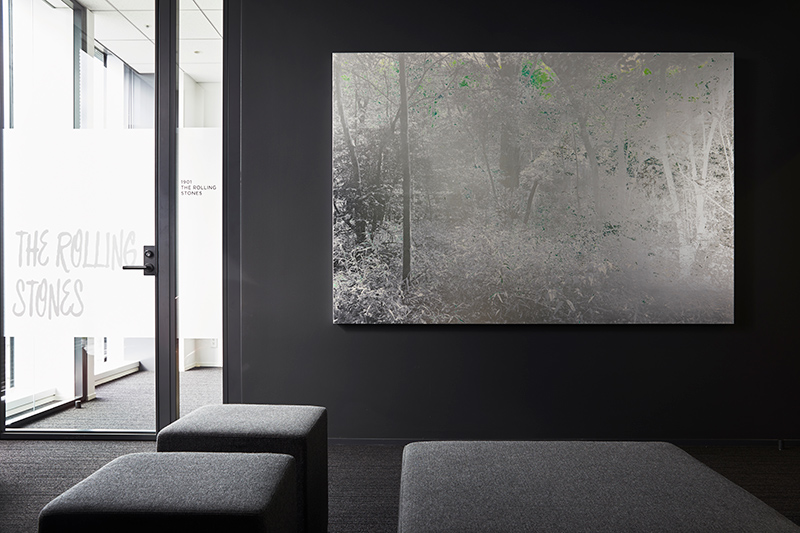Masayoshi Nojo “Mirage #39”

PROFILE
Born in Kanagawa Prefecture in 1989. Completed a degree course at Kyoto University of Art and Design Graduate School in 2015. He currently works for JD Malat Gallery (London) and Gallery Art Composition (Tokyo). In 2016, he worked with Warehouse Terada to establish PIGMENT Tokyo (Tennozu Isle), and is now the Store Manager.
DATE
2019
MEDIUM
silver and aluminum leaf, acrylic, YUPO, wood panel
DIMENSIONS
H150×W220×D6cm
STATEMENT
I attempt to create “states,” inspired by natural phenomena such as mirages and auroras, on a screen. By deconstructing the images that I myself recorded, to then recompose them with metallic marks on a screen, incorporating coincidences and phenomena, the images that were collections of data become visual experiences that call upon our senses. The world that wavers under the influence of light and air becomes an optical phenomenon that can be seen but never reached, the factual nature of images in photographs becoming abstract. This makes the relation of parts and their whole become fluid, as if the borders of the world are disappearing. When confronted with the nebulous image that appears, the “natural image” in the subconscious of people will be awakened, and a relationship and sense of distance between people and nature will emerge, no?
ABOUT MUSIC AND ART
When I create my art day-to-day, there is usually music playing in the background. Depending on my mood on that day I might listen to jazz or rock, western musicians, or even EDM. Looking back, my mother was actually a classical music singer, and so I had a lot of interaction with music from a very young age. There was a grand piano in my house, and I remember students coming over to play it quite often. I was the middle child in a family with three children, and all three of us were made to learn the piano from a young age. On top of that my older brother and younger sister could also play the violin, and my sister is even now a practicing violinist. In elementary school, my sister practiced every day, and I remember being annoyed that I could never hear the TV, but looking back now I guess I may have been privileged to enjoy that. When my brother got to high school he took up the electric guitar, and influenced by that I also started playing the drums. I had had experience playing taiko at local events, so it might be that the rhythm just came naturally to me. I have also in the past formed a band and had myself moved by the “live” feeling of performance. I’m removed from musical instruments now, but I feel that music has the power to move people, occasionally uplifting and occasionally soothing. A lot of art uses music. I recall feeling very struck by Céleste Boursier-Mougenot’s “Clinamen.” Many ceramic objects of various sizes were floating in a round pool. I felt comfortable as if a musical scale, but without music, were played by their touching each other. The same is true of the ringing of wind chimes: it’s as though time and space and sound are all melted into each other. In my works, too, the visual experience that transforms and harmonizes the image between space and time is one of the major elements. The tranquility that can be felt from the work may have been created by incorporating such disorderly natural sounds.
Masayoshi Nojo PLAYLIST


